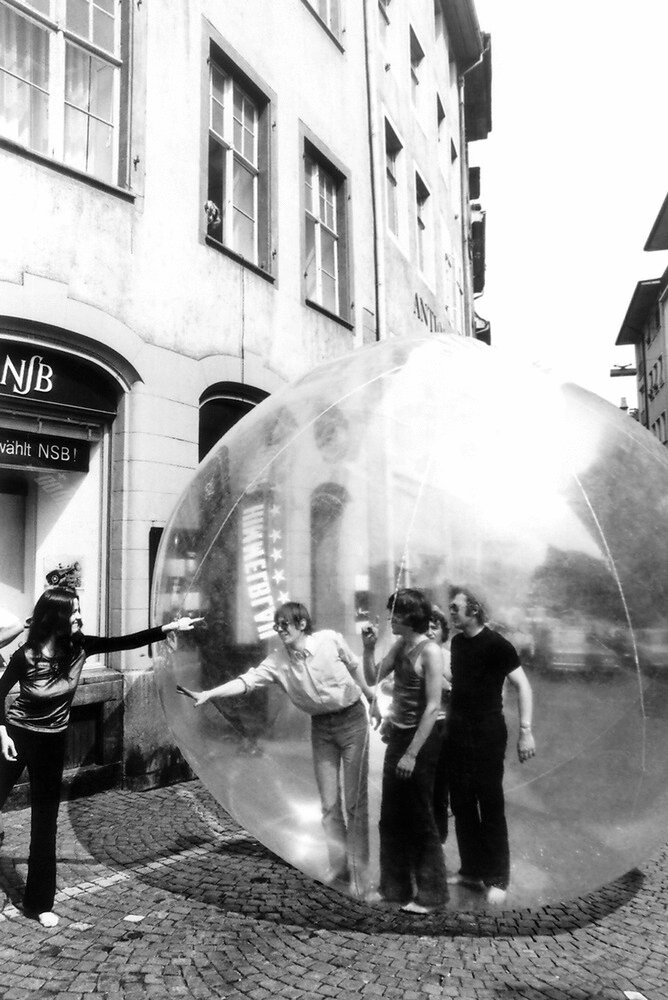The Early Days and the Enduring Legacy of Coop Himmelb(l)au

Written by Kayley Overstreet
Europe in the 1960s was an incubator for emerging provocative architecture radicals who defied traditional architecture dogma in favor of counterculture that transcended time and space. Coop Himmelb(l)au, a Vienna-based faction of this movement, questioned the clean lines, rigidity, and literal nature of modernist architects of the time. While the firm is known for their rebellious spirit and aggressive forms that are generated through state-of-the-art 3D software and technologies, it’s important to acknowledge the work that the firm did shortly after their inception in 1968, and how their early oeuvre still relentlessly breaks the status quo of modern-day practice and academic discourse.
Coop Himmelb(l)au was founded by avant-guardists Wolf D. Prix, Helmut Swiczinsky, and Michael Holzer in Vienna, Austria. Their early work sought to create and utilize architecture as an experiment that would react to the human body. Through multiple installations, they were able to make architecture look inwards, towards individual users, but project that in a highly public way that showed how biofeedback could have the power to transform buildings as we know it.
In their Astroballon project, the team used medical equipment to record and amplify the user’s heartbeat, and then play that feedback to the user so that they could adjust their breathing rate and anxiety levels to enter a state of meditation and relaxation. Not only was the user relaxing, but this feeling was shared with passersby who would visually see the heartbeat through different light patterns. The relationship between the user, balloon, and onlookers created both an architectural and social solution.
Read more on archdaily.